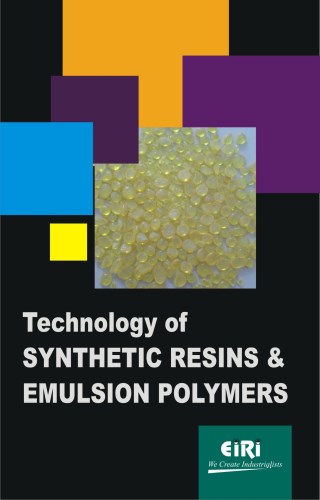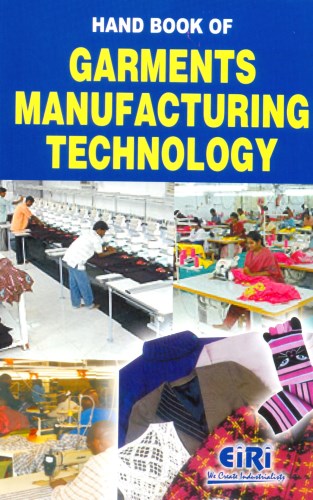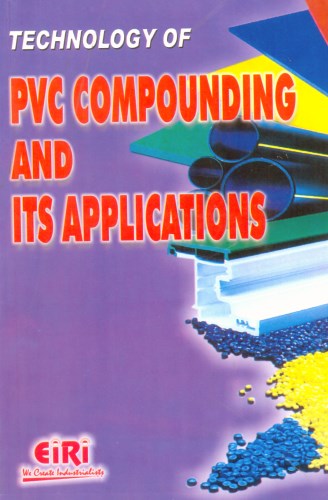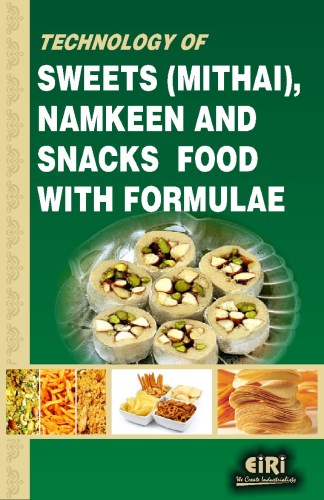Description
Technology of Synthetic Resins and Emulsion Polymers
Contents cum Subject Index of the Book
- The Chemistry of Resin Formation and Resin Properties
- Introduction
- Fundamentals of Polymer Formation
- Functions of Reactive Groups
- Cross-linked Polymers
- Formation of Polymers
- Polycondensation
- Interfacial Polycondensation
- Sequence of Reaction
- Copolymer Formation
- Rate of Polymerization
- Addition Polymerization in Practice
- Chain Transfer Reactions
- Stereopsecific Polymerization0
- Polyaddition Reactions1
- Types of Polymers
- Polyesters
- Formation of Alkyds
- Saturated and Unsaturated Polyesters
- Polyamides
- Phenolic Resins
- Amino Resins
- Epoxide Resins
- Vinyl Polymers
- Polyvinyl Alcohol
- Silicones
- Practical Applications
- The Chemical Engineering of Oil and Resin Processing
- General Requirements for Processing Equipments
- Materials of Construction
- Branches and Connections
- Stirring Equipment
- Types of Agitators
- Sealing
- Drive Units
- Fume Disposal and Scrubbing
- Desing Consideration
- Sludge Handling Equipment
- Condensing and Refluxing
- Design and Layout of Tubes
- Water Receiver
- Ancillary Equipment
- Agitators
- Heating
- Reflux Condenser
- Thermometer
- Steam Arrangements
- Vacuum Pumps
- Pressure and Flow Indication
- Fume Extraction
- Lagging
- Miscellaneous
- Heating and Cooling
- Criteria for Selection of Heating and Cooling system
- Calculation of Film Coefficients
- Heat Transfer Coefficient
- Steam Heating
- Pressurised Hot Water
- Heating at Higher Temperature
- Direct Firing
- Immersion Tubes
- Kestner Coil
- Typical Arrangement
- Cooling
- The advantages of this type of heating system are :
- Heating by Electricity
- Immersion Heating
- Heating through The Vessel Wall
- Induction Heating
- ‘Isoductive’ Heating System
- Heating of Pipework and Ancillaries
- Alkyd Resins
- The nature of Alkyd Resin
- Raw Materials
- Dibasic Acids
- Polyhydric Alcohols
- Modifier for Alkyd Resins
- Formulation of Alkyd Resins
- Formula Development
- Calculation of Alkyd Formulations
- Typical Formulations
- Manufacture of Alkyd Resin
- Alcoholysis
- Catalysts
- Control of Alcoholysis
- Acidolysis
- Fatty Acid Process
- Esterification
- Alkyd Manufacturing Plant
- Applications of Alkyd Resins
- Oil Free Alkyds
- Polyesters
- Saturated Polyesters
- Condensation and Addition Polymerization
- Main Components of Unsaturated Polyesters
- Brief History of Surface Coatings
- Characteristics of Unsaturated Polyesters
- Two points should be noted here
- Functions of initiators,
- Accelerators, Inhibitors
- Effect of structure of Polyester Backbone on Properties of Cured products
- Effect of Chemical Structure on Melting points of Linear Polyesters
- Effect of Structure on Properties of Cured Products
- Commonly used polyols and their advantages are :
- The effect of unsaturated monomers on properties of cured products
- Polyester coating composition
- Radiation Cure
- Methods of Application
- Amino Resins
- Formation of Amino Resins
- Methylol formation
- Alkylation
- Urea Formaldehyde Resins
- Methylol Formation
- Etherification reaction
- Melamine Formaldehyde Resin
- Melamine Methyl Formation
- Alkylation of Melamine Methylols
- Other Amino Resins
- Glycoluril
- Production Amino Resins
- Properties of Amino Resins
- Uses of Amino Resins
- Self- Polymerization
- Co-reaction with alkyd and polyester resins
- Co-reaction with Acrylic Resins
- Epoxy resins
- Acid Catalysed Lacquers
- Water Based Coatings
- Appendix 1 Solvent Tolerance
- Appendix 2 Non-Volatile Content
- Polyurethane Resins
- Chemistry
- Raw Materials
- Isocyanates
- Tolylene Diisocyanate (TDI)
- 4,4′ Diphenylmethane Diisocyanate (MDI)
- Hydroxyl Component
- Hazards of Isocyanates
- Classification of Polyurethanes
- Urethane Oils and Urethane Alkyds
- Moisture-cured urethanes
- Blocked Isocynatee Systems
- Two-component catalyst-
- Cured Polyurethanes
- Two-Component Polyol Type
- Polyurethanes
- Epoxy Resins
- Epoxy Resins Manufacture and Characterization
- Curing Agents for Epoxy Resins
- Principles in Formulating with Epoxy Resins
- Solventless and High Solids
- Coatings
- Tar Epoxy Coatings
- Flooring Compounds
- Fibreglass Laminates
- Solvent Based Paint
- High Solids Coatings
- Solventless Tar Epoxy Coatings
- Solventless Coating for Airless Spray Equipment
- Single-Pack Epoxy
- Maintenance Paints
- Epoxy Esters
- Single Pack Thermoplastic
- Epoxy Systems
- Epoxy Industrial Baking
- Finishes
- Water Dispersible Epoxy Resins
- Epoxy/Polyamide Emulsions
- Epoxy Baking Enamels
- Water Dispersible Epoxy
- Resin Coatings for Electrodeposition
- Epoxy Aqueous Powder Suspension (APS)
- Silicone Resins
- Direct Process
- Grignard Process
- Preparation of Silanols
- Polymerization
- Silicone resins
- Pure Silicone Resins
- R : Si Ratio
- Methyl-and phenyl-content
- Viscosity
- Properties of pure Silicone
- Surface Coating Resins
- Resistance to Weathering
- Blending Resins
- Silicone Intermediates
- Silicone— Organic Copolymers
- Preparation and Formulation of Silicone Resin Based Coatings
- Cure Catalyst Driers
- Pigments and Dyes
- Thinners
- Application Guides
- Surface Preparation
- Priming
- Applying the Coatings
- Curing
- Uses
- Toxicity
- Other Silicone Resin
- Application
- Electrical Varishes
- Release Resins
- Masonry Water Repellants
- Other Silicones for Surface Coatings
- Acrylic Solution
- Resins
- Backbone Monomers
- Synthesis
- Addition Polymerization
- Copolymerization
- Thermoplastic Acrylics
- Solution Polymerization
- Properties and End Uses
- Thermosetting Acrylics
- Selection of Monomer
- Classification and properties
- Acrylamide Copolymers
- Acid Copolymers
- Hydroxy Copolymers
- Curing Reactions
- Aqueous Solution Acrylics
- Non-Aqueous
- Dispersions (NAD)
- Rubber Resins
- Introduction
- Natural Rubber
- Synthetic Rubbers
- Procedure
- Rubber Resins and Latexes
- Chlorinated Rubber Resins
- Lifting
- Parlon
- Cyclized Rubber Resins
- High Styrene-Butadiene
- Rubber Resins
- Chrlorinated Biphenyls
- Chlorinated Paraffins
- Synthetic Rubber Resins
- Latexes
- Emulsion Polymers
- Key- Components in Emulsion Polymerization
- Surfactants
- Initiators
- Water
- Polymerization in Emulsion Systems
- Based on Styrene
- Influence of Monomer
- Composition on properties and performance
- Hardening Monomers
- Vinyl Acetate
- Styrene
- Methyl Methacrylate
- Flexibilizing Monomers
- Esters of Acrylic Acids
- Esters of Maleic or Fumaric Acids
- Vinyl Esters
- Olefins-Butadiene
- Olefins- Ethylene
- Specific Monomers
- Effect of Monomer Composition on Film Properties
- Effect of Water Phase and Particle Size
- Particle Size
- Manufacture and Testing Process Variables
- Emulsion Testing
- Application of Emulsion Polymers
- Adhesive Industry
- The Printing Ink Industry
- The Textile Industry
- The Leather Industry
- The Floor Polish Industry
- The Paper Industry
- The Agriculture Industry
- Water Reducible Resins
- Water Soluble Polymers
- Maleinized drying oils
- Alkyd Reins
- Acrylic-modified water-
- Soluble Alkyds
- Disadvantages are
- Polyesters
- Silicone-modified Alkyds and Polyesters
- Epoxy Resins
- Anhydrides
- Defunctioalizing the poxide Ring
- Cationic Polymers
- Thermoplastic Polymers
- Thermosetting Polymers
- Amino Resins
- Urea Formaldehyde
- Melamine Formaldehydes
- Substituted Guanamine
- Formaldehyde
- Self-cross-linking
- Other Water soluble Polymers
- Viscosity Characteristics
- Amines
- Viscosity
- Drying
- Stability
- Foam Control
- Colour Retention
- Toxicity
- Variation of Amine Levels
- Viscosity
- Drying Properties
- Stability
- Gloss
- Cosolvents
- Coupling Efficiency
- Viscosity
- Variation of Cosolvent
- water ratio
- Stability
- Drying properties
- Foam Control
- Drier for air dry and
- Force dry systems
- Cross Linking of Water
- Soluble coatings
- Additives for Coatings
- Pigments
- Formulation of Water- Soluble Coatings
- Trouble Shooting with Water- Soluble Polymers
- Water Soluble Polymers
- Classification
- Properties of Cellulose Ethers
- Application
- Uses






